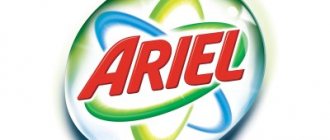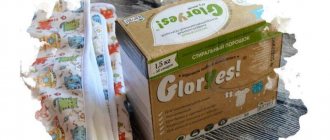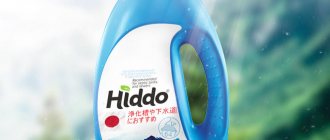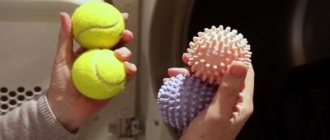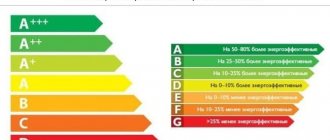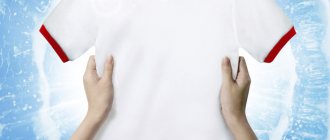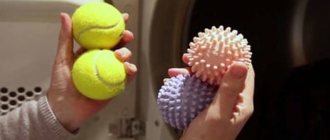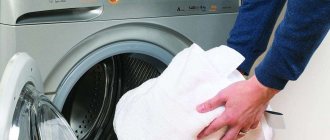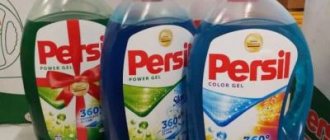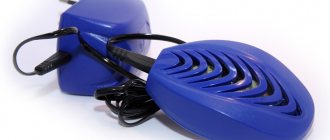Washing powders and liquid gels have become a part of our lives. It is impossible to imagine using a washing machine without them.
However, it is important not only to get clean, stain-free items. You must be sure that the detergent will not cause allergies in the person who will use the laundry. Even with the most thorough rinsing, microparticles of the powder will remain on bedding and clothing and will come into contact with the skin.
It is useful to know what these detergents are made of and why they wash better than soap. Inexpensive, effective formulations contain phosphates. They enhance the ability of the powder to wash clothes and soften the water. When purchasing such a product, you should know how phosphates affect the human body.
Are phosphates harmless?
Phosphates are salts of phosphoric acids. Initially, phosphates were used only as fertilizers to provide plants with the necessary amount of phosphorus.
However, a number of properties of phosphates turned out to be useful in everyday life. It is on their basis that inexpensive powders are produced that can efficiently wash dirty laundry. Treating clothing and bedding with phosphate compounds is very economical. When washing with such powders, you save water, electricity, and money for purchasing detergent.
Part of the popularity of products containing phosphates is determined by price. But on the other hand, such powders effectively remove dirt from laundry. They allow you to dissolve salts of fatty acids that are insoluble in water, prevent secondary contamination during washing, and prevent the formation of scale inside the washing machine. They are able to cope even with colored stains, breaking down the pigment inherent in the stain.
The effect of phosphates on the human body
Phosphorus is present in the body of every person. There is especially a lot of it in bones. Just like calcium, it is necessary for bone growth. It is involved in the process of protein formation, without it the functioning of the muscular system is impossible. However, excess phosphorus, as well as some of its forms, are the cause of many diseases.
Phosphates used in laundry detergents can cause dermatological problems. In addition to skin diseases, phosphates often cause dysfunction of the liver and kidneys, cause poisoning, which contributes to metabolic failure and exacerbation of chronic diseases. The use of powders containing phosphates leads to:
- destruction of skin fats, which reduces the protective properties of the skin;
- the appearance of a rash, the development of dermatitis;
- decreased immunity;
- disruption of the human reproductive system.
The harmful effects of phosphates on the body have led to the fact that in many countries their use in laundry detergents is prohibited. These include Belgium, Great Britain, Japan, Spain, Germany and some others. To avoid putting your health at risk, you can use phosphate-free washing powders or liquid detergents.
Stork Stork is a magical whirlwind from the first days of life
The product is included in the rating of children's washing powders, since it can be used to treat baby's clothes and not be afraid of the development of allergic reactions, since all active ingredients are contained in safe concentrations.
The foaming agents here are anionic surfactants. The component is quite aggressive, but it is contained here within normal limits (only 5%), so if you follow the proportions when washing things, the product will not cause any irritation. Contains natural soap base. Polycarboxylates prevent a gray tint on linen and prevent dust from settling on clothes, which causes them to darken after several washes.
Quite an aggressive component, but also within normal limits. Use 2 bleaches to remove stains. One is oxygen-containing (safe and very effective), the other is optical (undesirable in children's powders, but also contained in accordance with the norm). The product costs 180-700 rubles.
It is not dangerous for newborns, infants, or adults with skin hypersensitivity or sensitization.
Behind:
- safety is practically no different from products without surfactants, if you follow the dosage recommended by the manufacturer;
- 2 types of bleaches that cope flawlessly even with old dried stains;
- does not allow clothes to darken and have a “washed out” appearance;
- cheap.
Against:
If you regularly add more than the manufacturer recommends, then negative effects on the skin are possible, so you need to monitor the dosage.
Phosphate-free washing powders
Having decided to protect yourself and your loved ones from the influence of harmful substances, you need to choose a powder without phosphates in order to use it in the future. Any detergent includes a number of components that remove dirt and determine the quality of the wash.
- The choice depends on the washing method. Some powders are designed for manual use and use in activator-type machines. Others are designed specifically for automatic washing machines.
- There are no phosphates and their analogues, phosphonates, in such powders. However, their composition necessarily contains surfactants - surfactants. They are necessary to dissolve dirt deposits and remove them from fabric fibers. Surfactants are components of a detergent that are harmful to humans, so it is necessary to ensure that the content of this component does not exceed certain standards.
- Phosphate-free powders contain zeolites. They are less dangerous to humans, but at high concentrations they can also cause harm to the body. Zeolites are a group of minerals that can remove contaminants through catalytic and sorption effects.
- When choosing phosphate-free detergents, you should make sure that the content of surfactants and zeolites in them is minimal. European standards require the presence of no more than 2% of so-called anionic surfactants in powder. In our country you can find detergents containing from 5 to 15% A-surfactants. Zeolites should be represented by silicates and carbonates; these are the least harmful of the minerals that make up the group. Their quantity should not exceed 1/3 of the powder by weight.
conclusions
Let's summarize:
- Safe products are universal in 99% of cases - they are suitable for any type of washing. If you want to quickly wash something by hand, you can use gels and powders used for automatic washing machines.
- If the SMS does not smell, then it is probably phosphate-free. Lack of odor is a very good safety marker. Hypoallergenic SMS not only does not smell, but also does not contain harmful substances.
- The average cost of SMS without fragrances and phosphates is 300–450 rubles per 1 kg. They are expensive, but they remove stains worse than their analogues with phosphates and enzymes.
- SMS for children's underwear can be used for adult clothes. Their “childhood” lies in the maximum safety of the composition.
Unscented SMS has many disadvantages related to effectiveness. But often washing errors are associated not so much with the characteristics of the detergent, but with errors in its use. Overall, there is still a trade-off between washing efficiently and being environmentally friendly.
Features of phosphate-free detergents
High-quality washing powders without phosphates do not form a large amount of foam. This is due to the limited surfactant content.
Phosphate-free powders require large amounts of water for washing. On average, 1 kilogram of laundry requires 5 liters. In this case, the amount of powder is 1 teaspoon. It is not worth increasing the dose, as the quality of the wash will decrease.
We recommend:
How to clean a mouton fur coat at home
Phosphate-free detergents are relatively worse to rinse and wash less efficiently. Therefore, when choosing a powder, it is advisable to choose products from well-established manufacturers.
Rating of safe products
Below are the top 5 safe products from different manufacturing countries:
- MaKo Clean (Russia) – contains soap (crumbs) and soda ash. Suitable for washing children's clothes, does not cause allergic reactions.
- E cover (Belgium) – contains biosurfactants and is economically used. Suitable for all types of clothing, including items made from delicate and natural fabrics.
- Eco doo (France) is the No. 1 product for removing complex stains; the stain goes away after the first wash. Contains essential oils (chamomile, rosemary). Soap based on olive and bay oil softens water. You can wash any linen. Good performance on all types of machine washes.
- BioMio Color - based on surfactants, zeolites, cotton extract, palm oil. Not recommended for washing woolen items. Baby ones need to be rinsed 3-4 times.
- Klar EcoSensitiv e (Germany) is used to wash white clothes (contains oxygen bleach). If used for colored clothes, the temperature should be up to 30 degrees. Provides a soft effect and does not destroy the fabric.
Read more ► Washing gel “Laska”: results and methods of use in the washing machine
Since the clothes of small children cannot “boast” a large assortment of stains (mainly berry, vegetable, herbal, and rarely grease stains), it is quite possible to wash them with phosphate-free detergents by hand
When choosing a powder, you need to take into account such indicators as:
- cost per kg (on average varies from 150 to 300 rubles);
- frequency and duration of washing;
- main directions (getting rid of odor, removing difficult stains).
Rice starch included in the composition provides softening to water and clothes. If washing in 90% of cases is carried out at low temperatures (30-40 degrees), it is recommended to give preference to powders that contain enzymes. They remove old stains well.
Rating of the best powders without phosphates and surfactants
Good baby powders contain natural sugar surfactants, soap, essential oils, citric acid, salt, soda and a number of additional substances that are not harmful to health. For use we can recommend:
- “Our Mama” is a Russian-made powder made from soap shavings, it does not contain dyes, flavors or synthetic additives.
- "Chistown" is a Russian-made product. Consists of natural soap, soda and citric acid. Designed for cotton, linen, viscose and synthetic fabrics. Requires additional rinsing.
- BioMio - produced in Russia and Denmark. Contains surfactants of plant origin, palm soap, cotton extract. The zeolite content does not exceed 15%.
- Sodasan Comfort is a German powder designed for people with sensitive skin, suitable for washing children's clothes. Contains soap based on vegetable oils, soda, and a number of other components. Cleans well without soaking.
- Amway baby is made in the USA, according to the manufacturer it is harmless to children. Positioned as biodegradable. Contains small amounts of phosphonates.
What is important to consider when choosing?
You can choose the right detergent for washing children's clothes, provided you follow some recommendations:
- It is important to make sure that the washing powder does not contain bleaches, fragrances, conditioners, or phosphates. If any of the listed components are declared by the manufacturer, then it is better to refuse such a product. It is necessary that there should be an o on the packaging, and if the product is intended for washing clothes of a child in the first months of life, then “for a newborn.”
- You can minimize the risks of buying falsified, counterfeit washing powder if you choose the product in specialized retail outlets (stores or children's goods departments of large supermarkets). The appropriate certificates, which the seller must provide upon the buyer’s request, will help you verify the quality of the product and its safety.
- When choosing powder for children's things, you need to pay attention to what age it is intended for. For infants, the manufacturer makes a special o on the packaging.
- When making a purchase, you need to make sure that the packaging is not damaged and there are no wet marks on the cardboard box. It’s good if the packaging is sealed and the manufacturer has provided the possibility of tightly closing an already opened container (for example, a zip fastener).
High-quality, safe phosphate-free washing powder for children's clothes cannot be cheap. When choosing a cheaper analogue of detergent, you should think carefully about the feasibility of such a purchase.
All the most important and useful information about children's washing powders is presented here.
Technological features of washing with phosphate-free powders
When switching to washing with modern phosphate-free powder, it is useful to clean the washing machine from the remnants of old products and scale using a special composition. The laundry also contains particles of old phosphate powders, so it is recommended to soak it for the first 2-5 washes before loading it into the machine.
When using the product, it is important to follow the manufacturer's recommendations for the amount of powder or gel. Too large a portion will lead to poor washing, as there will not be enough water in the product.
Rate this post
How to understand the presence of harmful substances?
Thick foam during washing indicates the presence of phosphates in the washing powder, since their absence reduces foaming.
According to the law, products must indicate the full and clear composition of the product. However, manufacturers have learned to hide cheap and harmful ingredients from the public. To do this, use abbreviations or unknown analogues of names. Manufacturers, in order to reduce costs, use phosphonates or zeolites and phosphates together, indicating the absence of the latter on the packaging. In order not to overpay, you need to carefully study the composition of the powder. The only sign that may indicate the presence of phosphates is thick foam.
Negative impact on nature
Scientific experiments have shown that the substances in question can significantly harm the environment. If such a chemical compound enters a domestic reservoir and begins to accumulate there, blue-green algae will soon begin to grow rapidly in the water. As a result, the water begins to “bloom” and its color changes. Local inhabitants, as well as animals (wild and domestic) and people, suffer from this effect. When phosphates leave citizens’ washing machines, they are discharged into the sewer system. Even with the use of modern treatment facilities, not all harmful substances are captured, so they end up in water bodies.
Closed reservoirs suffer the most, where harmful “chemicals” accumulate. A concentration of 1 milligram per liter is enough for the water to begin to “bloom.” Photosynthesis ensures the rapid reproduction of algae. As a result, the water tastes worse and acquires an unpleasant odor. Now you can’t drink it or swim. It is difficult to get rid of toxins that appear when algae rots - high temperature, chlorine and acidification do not help. For a long time, there was no freely available information about the dangers of substances present in cleaning products. Now you can read that blooming ponds are dangerous for swimming and, of course, drinking.
Criterias of choice
Consumers are approaching environmentally friendly products in different ways. Some suffer from diseases, others are looking for products that are not tested on animals (phosphate-free powders are just like that), others choose safe formulations for their children.
Price
Such products, of course, are somewhat more expensive than conventional detergents, but if you take a large package at once, the price becomes quite comparable to conventional laundry detergent, due to the economy of using phosphate-free formulations.
Frequency and duration of washing
They are great for frequent and even daily washing. The duration directly depends on the degree of contamination. For unworn items without stains, 15 minutes is enough.
Main directions
The products are available for colored and white laundry; they may have a delicate aroma or be fragrance-free. The formulations are specially developed for children or may be intended for asthmatics and allergy sufferers. In addition to bulk products, gels with the same qualities are very relevant.
